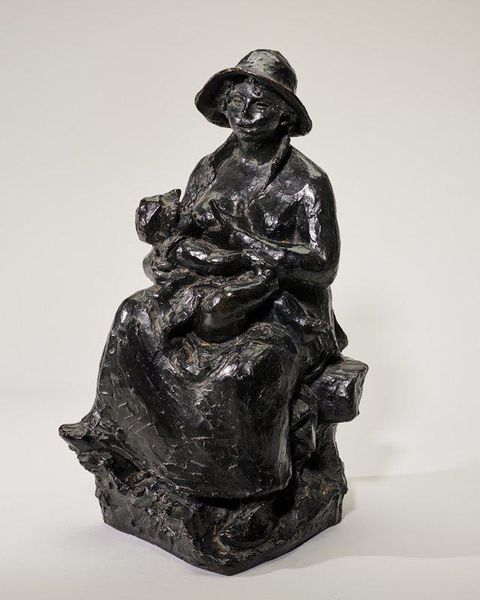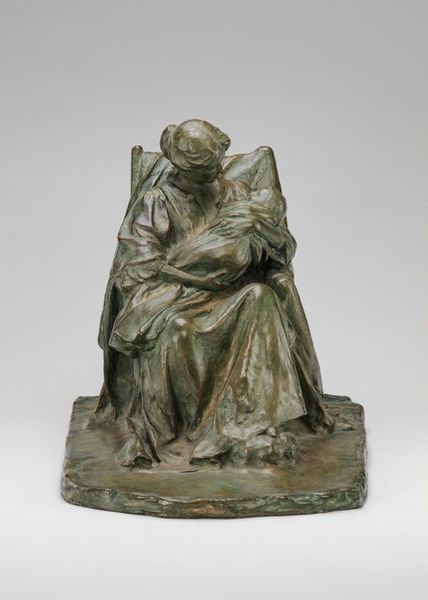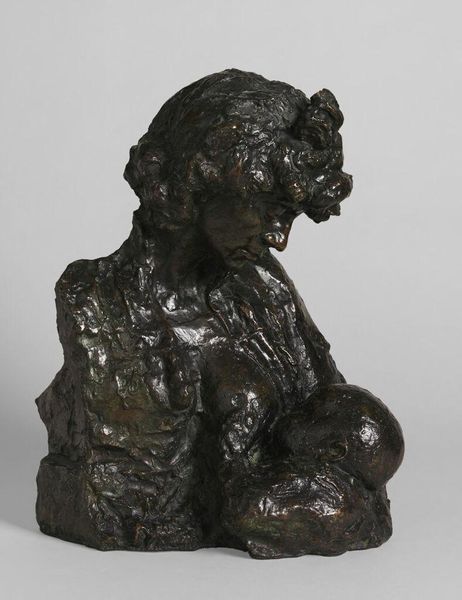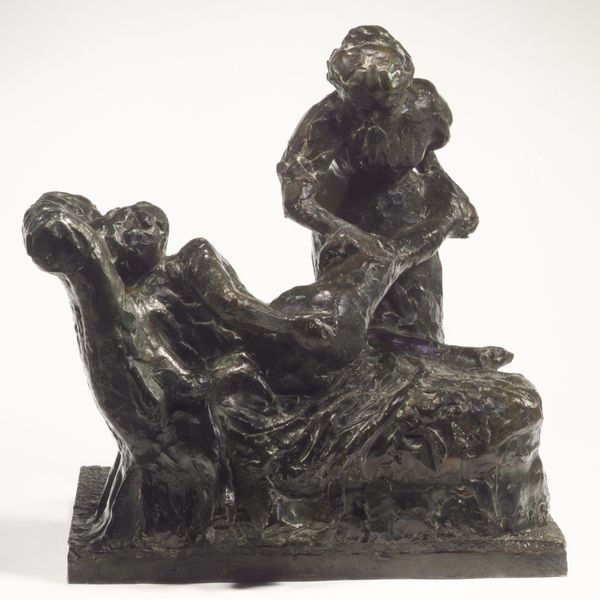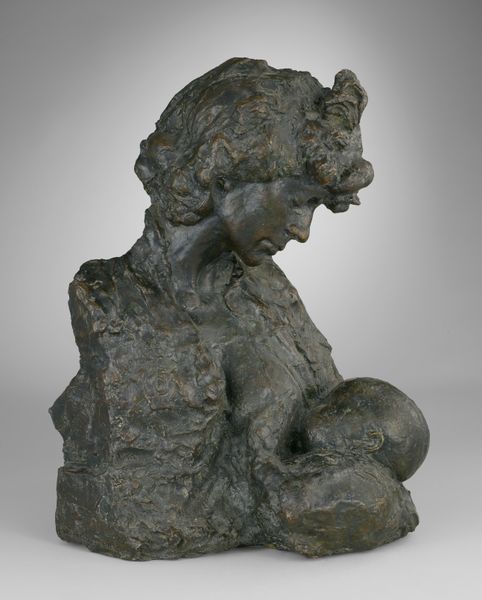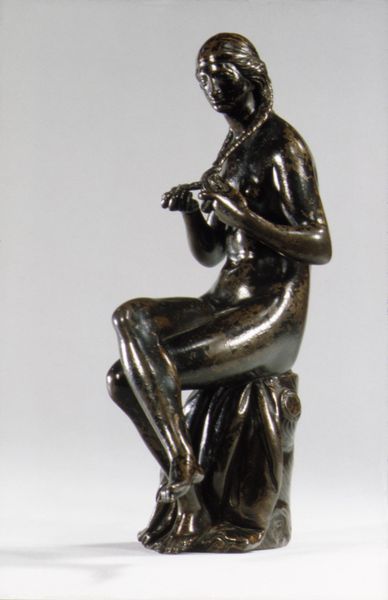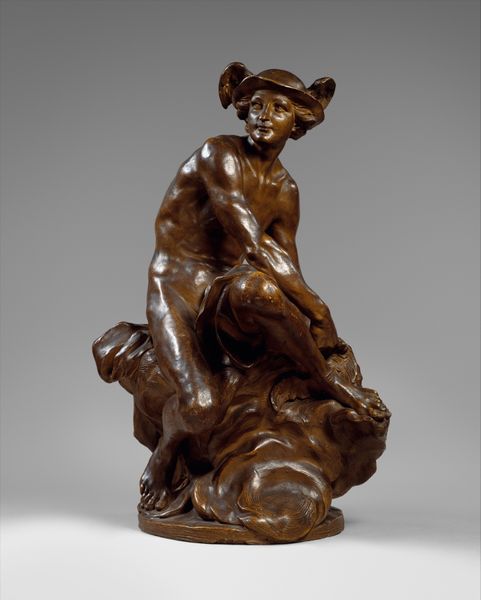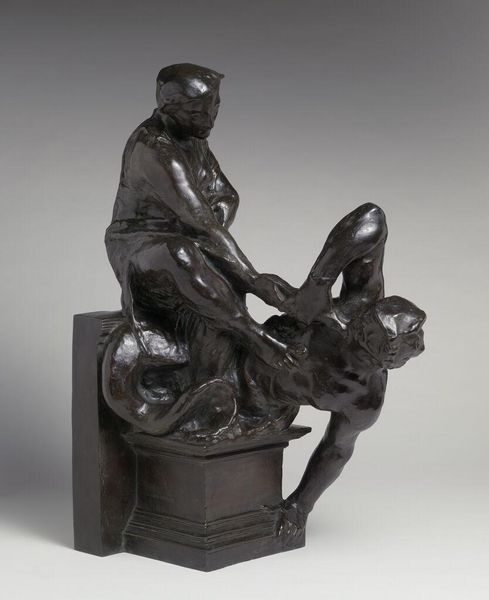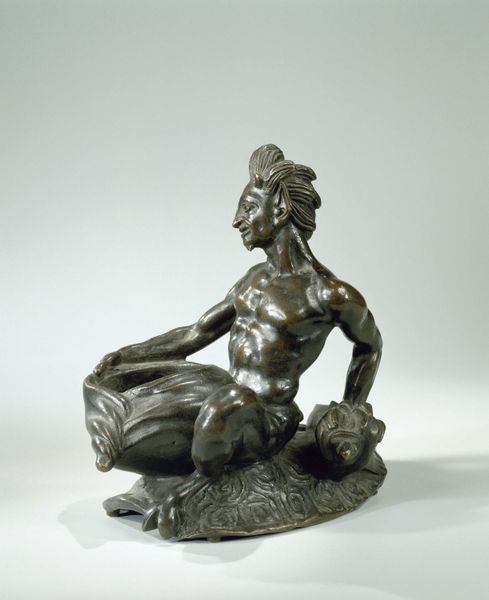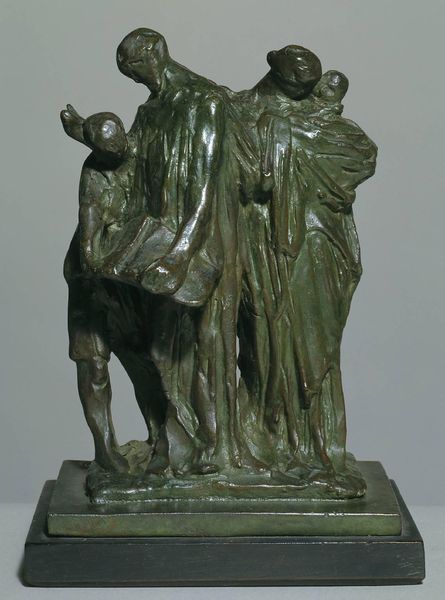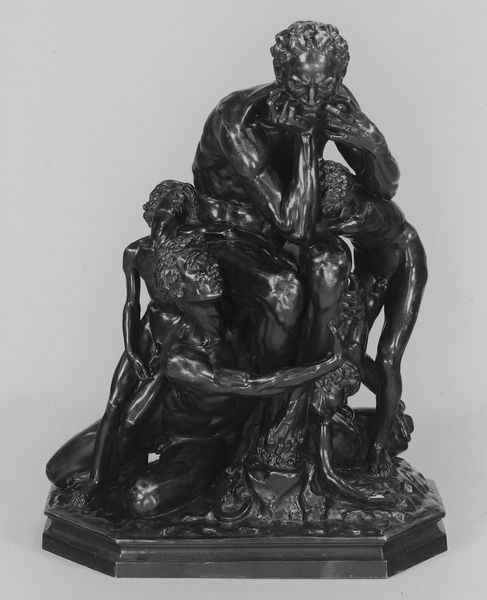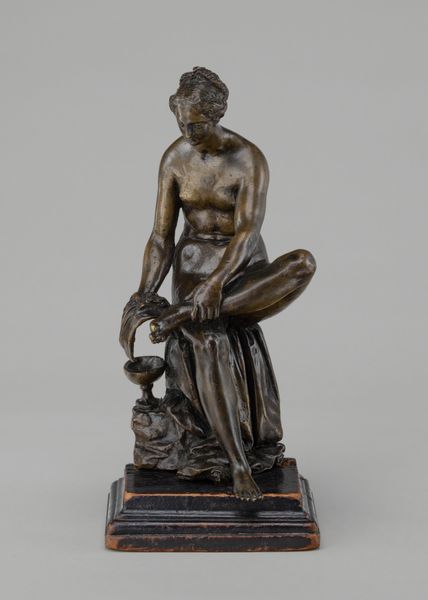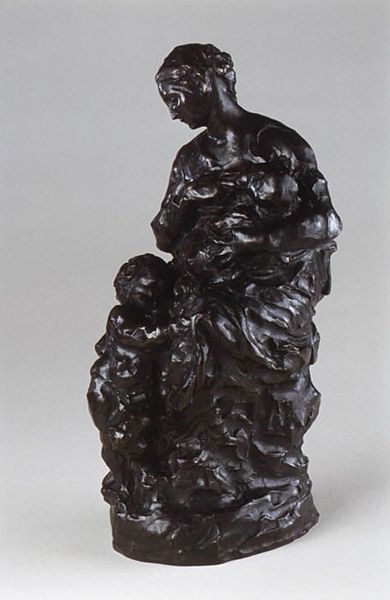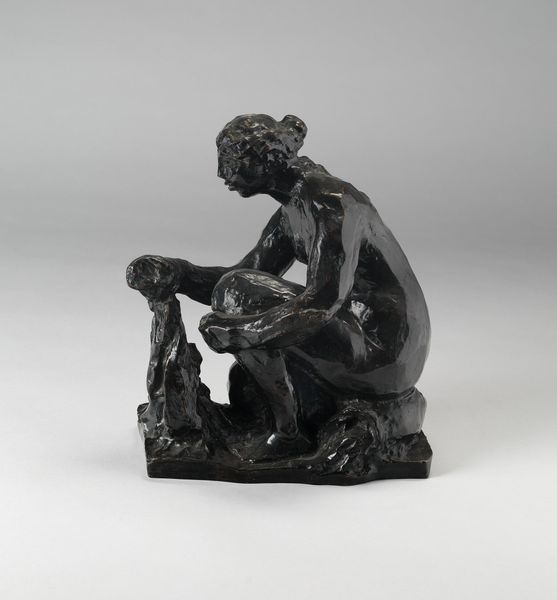
Dimensions: object: 533 x 235 x 318 mm
Copyright: CC-BY-NC-ND 4.0 DEED, Photo: Tate
Editor: This bronze sculpture, titled "Mother and Child" by Auguste Renoir, really emphasizes the weight and texture of the bronze. What can you tell me about how the materials influence the work? Curator: The roughness of the bronze challenges the idealization often associated with depictions of motherhood. Consider the labor involved in sculpting, casting, and finishing. What does the medium itself communicate about the social realities of motherhood, moving away from sentimentality? Editor: That's a fascinating point. It makes me wonder about the intended audience and how they might have received this less-than-idealized portrayal. Curator: Precisely. Renoir's choice of bronze and its manipulation force us to consider the economic and social context surrounding the creation and consumption of art. Editor: I see now that the material transforms the meaning. Curator: Indeed, by examining the materiality, we gain a deeper understanding of the artist's intention and the work's social impact.
Comments
tate 6 months ago
⋮
http://www.tate.org.uk/art/artworks/renoir-mother-and-child-n04435
Join the conversation
Join millions of artists and users on Artera today and experience the ultimate creative platform.
tate 6 months ago
⋮
In his last years Renoir made a number of sculptures using the female form to symbolise a benign relationship between human beings and nature. This informal study of a woman breast-feeding a baby was based on a painting executed many years earlier, in 1885, of Mme Renoir nursing their first child, Pierre. Soon after Mme Renoir's death in 1915, the artist happened to see the painting again, and this gave him the idea of commemorating his wife, who had been a devoted housewife and mother, in a sculpture. Renoir suffered from arthritis at this period, and the bronze was fashioned by Richard Guino under the artist's instruction and using the painting as a basis. Gallery label, September 2004
